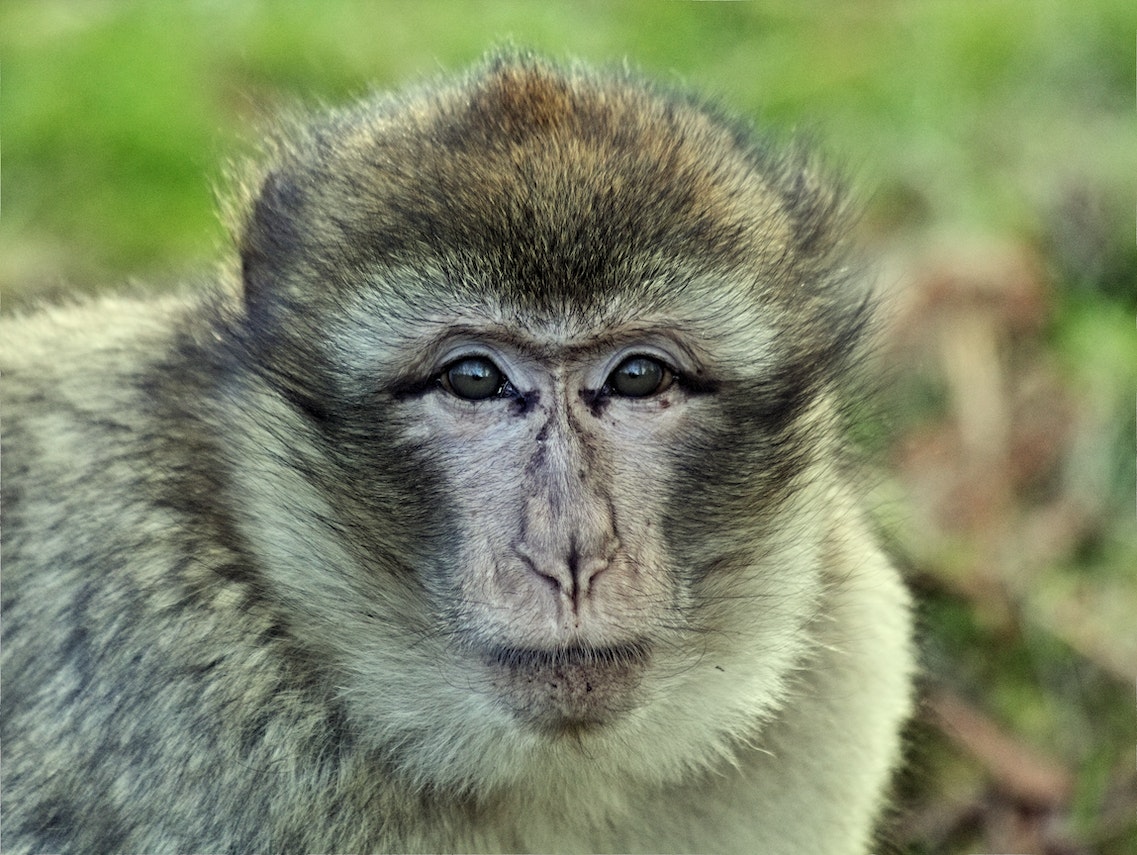Top 25 Fun Facts About Monkeys

Monkeys are one of the most fascinating creatures in the animal kingdom. From their intelligence and social behavior to their role in the ecosystem and medical research, there is so much to learn about these primates. In this article, we will explore 25 fun facts about monkeys, including their different types, communication methods, habitats, and more.
The Different Types of Monkeys
Monkeys come in all shapes and sizes and are divided into two main groups: Old World monkeys and New World monkeys. Old World monkeys are found in Africa and Asia, while New World monkeys are found in Central and South America. They are further classified into numerous species, such as baboons, macaques, howlers, and capuchins.
The Intelligence of Monkeys
Monkeys are highly intelligent creatures and have been known to exhibit problem-solving and tool-making skills. They are also capable of facial recognition and can understand abstract concepts. Some species of monkeys, such as the capuchin, have even been observed using currency as a form of exchange.
The Relationship Between Humans and Monkeys
Humans and monkeys have a complex relationship that dates back thousands of years. In some cultures, monkeys are revered as sacred animals and are even worshipped. In others, they are seen as pests and are hunted for their meat or fur. Monkeys have also been used in medical research, as they share many genetic similarities with humans.
The Origin of the Word “Monkey”
The word “monkey” is believed to have originated from the West African word “mona,” which means “monkey” or “ape.” It is also possible that the word is derived from the Arabic word “maimun,” which means “monkey.”
The Evolution of Monkeys
Monkeys are believed to have evolved from a group of animals known as prosimians, which include lemurs and tarsiers. Over time, monkeys developed larger brains and more complex social structures, which helped them to survive and thrive in their respective habitats.
The Role of Monkeys in Different Cultures
Monkeys play a significant role in many different cultures around the world. In Hinduism, the monkey god Hanuman is worshipped as a symbol of strength and loyalty. In Chinese culture, monkeys are often associated with wisdom and are a popular motif in traditional art.
The Diet of Monkeys
Monkeys are omnivores and eat a wide variety of foods, including fruits, nuts, insects, and small animals. Their diet varies depending on their habitat and the availability of food sources.
The Importance of Monkeys in the Ecosystem
Monkeys play a crucial role in maintaining the balance of their respective ecosystems. They help to disperse seeds, control insect populations, and serve as prey for larger predators.
The Lifespan of Monkeys
The lifespan of a monkey varies depending on the species. Some, such as the pygmy marmoset, have a lifespan of just 12 years, while others, such as the Japanese macaque, can live for up to 30 years.
The Communication of Monkeys
Monkeys use a wide range of vocalizations and body language to communicate with one another. They have been observed using different sounds and gestures to convey specific messages, such as warning others of danger or expressing fear.
The Social Behavior of Monkeys
Monkeys are highly social creatures and live in groups known as troops. They exhibit complex social behaviors, such as grooming, playing, and displaying dominance. Some species, such as the chimpanzee, have even been observed engaging in warfare.
The Physical Characteristics of Monkeys
Monkeys have a range of physical characteristics, such as prehensile tails, opposable thumbs, and fur that provides insulation and camouflage. Their physical adaptations have helped them to survive and thrive in a range of environments.
The Endangered Status of Monkeys
Many species of monkeys are currently threatened or endangered due to habitat loss, hunting, and the pet trade. Conservation efforts are critical to protecting these primates and their habitats.
The Different Habitats of Monkeys
Monkeys are found in a range of habitats, from rainforests and grasslands to mountains and deserts. Their habitat preferences depend on factors such as food availability, climate, and the presence of predators.
The Role of Monkeys in Medical Research
Monkeys have been used extensively in medical research, particularly in the development of vaccines and treatments for diseases such as polio and AIDS. Monkeys have played a significant role in medical research due to their similarity to humans in anatomy and physiology. They have been used to develop vaccines and treatments for various diseases, including polio, smallpox, and AIDS.
The Reproduction of Monkeys
Monkeys reproduce sexually, and the gestation period varies depending on the species. Most female monkeys give birth to one offspring at a time, and they care for them until they are old enough to fend for themselves.
The Hierarchy of Monkeys
Monkeys live in groups, and there is a social hierarchy among them. The dominant male is typically the leader of the group, and they are responsible for protecting the group from predators and other threats.
The Playful Nature of Monkeys
Monkeys are known for their playful and mischievous behavior. They engage in a wide range of activities, including swinging from tree branches, grooming each other, and playing with objects.
The Artistic Expression of Monkeys
Some monkeys have been taught to paint, and their artwork has become popular in recent years. The paintings are sold at auctions, and the proceeds are used to support monkey conservation efforts.
The Popular Culture References to Monkeys
Monkeys have been a popular subject in books, movies, and television shows for many years. They are often portrayed as mischievous and intelligent creatures, and their popularity has led to the development of many monkey-related products.
The History of Monkey Domestication
Monkeys have not been domesticated in the same way that dogs and cats have been. However, some cultures have kept monkeys as pets, and they have been used for various purposes, including entertainment.
The Superstitions Surrounding Monkeys
Monkeys have been associated with various superstitions throughout history. In some cultures, they are believed to bring good luck, while in others, they are considered bad omens.
The Conflict Between Monkeys and Humans
As humans continue to encroach on monkey habitats, there have been increased incidents of conflict between humans and monkeys. Monkeys have been known to raid crops and homes, leading to clashes with humans.
The Contributions of Monkeys to Science
Monkeys have made many contributions to science, particularly in the areas of medical research and evolutionary biology. They have helped scientists better understand human physiology and behavior.
Conclusion
Monkeys are fascinating creatures that have played a significant role in human history and culture. They are intelligent, social animals with a wide range of behaviors and characteristics. Despite the threats they face from habitat loss and other human-related issues, many efforts are underway to protect and conserve these amazing animals.





